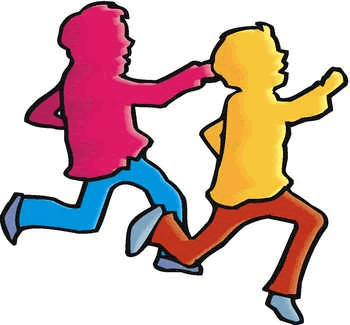Who Says It's All About Play?
WHO SAYS?
Declaration of Independence
We hold these truths to be self-evident, that all men are created equal, that they are endowed by their Creator with certain unalienable Rights, that among these are Life, Liberty and the pursuit of Happiness.
United Nations – Article 31 of the Convention on the Rights of the Child
States Parties recognize the right of the child to rest and leisure, to engage in play and recreational activities…and to participate freely in cultural life and the arts.
WHAT IS PLAY?
Definition According to the Oxford Dictionary
Verb: Engage in activity for enjoyment and recreation rather than a serious or practical purpose.
Noun: Activity engaged in for enjoyment and recreation, esp. by children.

The National Institute for Play describes these seven types of play:
Attunement – This establishes a connection, such as between a newborn and mother.
Body – The infant explores the ways in which her body works and interacts with the world.
Object – Playing with toys and handling physical things out of curiosity.
Social – Play which involves another child or group of children.
Imaginative (aka pretend or fantasy) – The child invents scenarios and acts within them.
Narrative (storytelling) – The play of learning and language, such as reading to a child
or listening to a child retell a story.
Transformative – Playing with imagination to transcend what is known to create a higher state.
There are many other definitions of play from pretend play to online play.
Dramatic/Fantasy Play – This play occurs when children dress up or pretend. They can use their imaginations as they take on different roles.
Structured Play – When there are rules and taking turns are involved, it is called structured play. Most children have an egocentric view of the world and it takes time to understand the importance of rules. There is often adult supervision with structured and competitive play.
Physical Play – When children climb, jump, swing, hop, run and use their gross motor skills it’s referred to as physical play. This can occur indoors our outdoors.
Small Motor Play – This involves puzzles, stringing beads, writing and activities that use small muscles.
Rough and Tumble Play – This is a natural way for children to release energy and learn to control emotions.
Constructive Play – With blocks, sand, and construction toys children learn to create and control objects in their environment.
Social Play - Children need to engage in social play with children of different ages. Through social play they learn to cooperate, share, take turns, and develop values.
Playing with the Arts - Music, visual arts, puppets, or any material where children can create provides hands-on play.
Online Play??? Really? Is sitting in front of a video game really play? Children can do this all day when they grow up, but how can they go back and play with play dough, or blocks, or be a super hero when they are thirty?
Stages of Play
Play is natural and instinctive for all human beings, and these are the basic stages of childhood play.
Stage 1 – Solitary Play (Birth through two)
Children love to be with family members, but they also enjoy time alone. They are busy exploring and discovering their word and are not interested if other children are in the same room.
Stage 2 – Parallel Play (Begins around age 2)
Children play next to each other because they are in the same area. They play side-by-side, but they engage in their own activities. They are interested in the same toys and think everything belongs to them.
Stage 3 – Associative Play (Around age 3)
Children still play independently, but they begin to talk, borrow, and take turns with toys.
Stage 4 – Cooperative Play (During the 4th and 5th year)
Children begin speaking, listening, communicating, and interacting with each other.